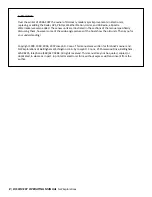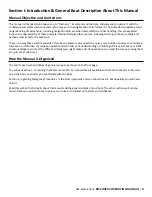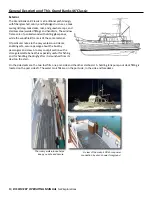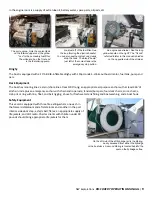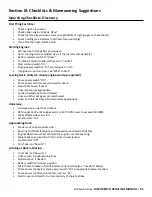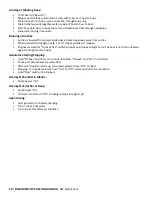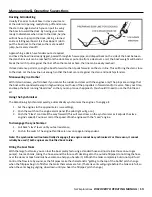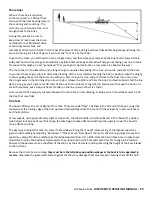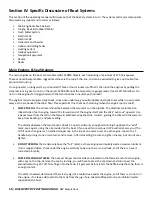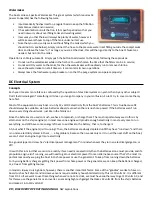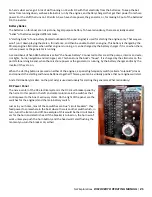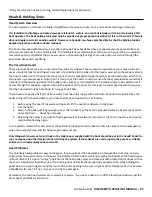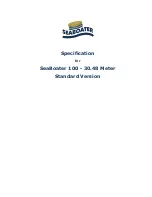
14
|
DISCOVERY OPERATING MANUAL
NW Explorations
Anchoring
Anchoring can be accomplished safely with minimum fuss if you are prepared. Or, if you are not ready, it can be stressful
and dangerous for you or the boat.
Before attempting to anchor, select an anchorage with a soft bottom such as sand, mud, or gravel, if possible. Look
at the charts and cruising guides for tips on good locations. Then, choose the spot in the anchorage where you have
room to “swing” on the anchor without disturbing other boats. Remember, responsibility for leaving room goes to each
successive boat to arrive, for the first boat has priority in the anchorage!
Here in the Northwest, because of the deep waters, all-chain rodes and small bays, we anchor a little differently than in
the Gulf of Mexico or Caribbean, for example. First, except in severe weather we use anchor chain scopes of only 4-to-1
or 5-to-1. For example, in water that is 40 feet at low tide in the typical anchorage, we might use 160 feet of chain unless
the weather was to be gale force or greater winds.
Second, because of the small bays and steep bottoms, we often rig a shore line from the stern of the boat to shore. The
best example of this would be at Todd Inlet at Butchart Gardens. Here is a bay that can accommodate 8 - 10 boats, yet
it is only about 150’ wide and 200’ long! Boats attach their bows to the mooring buoys or, in a few cases, anchor; and
then their sterns are secured to rings provided in the steep cliffs overlooking the bay. Boats are thus perhaps only 15-20’
apart, side to side.
Third, boats often will “raft” side by side in busy marinas, although this is not very common.
Fourth, courteous boaters will call vessels coming into busy bays and offer to let them raft to the same buoy, if signs on
the buoys do not limit usage to only one boat depending upon length.
Anchoring safely requires two persons, one at the helm maneuvering the boat and one on the bow operating the anchor.
Putting the bow of the boat over the spot where the anchor is to be placed after checking the depth on the depth
sounder, the windlass foot-switches are used to lower the anchor slowly toward (but not onto) the bottom, by watching
the chain markings.
The anchor chain on Discovery is 360 feet, with distances from the anchor marked as follows:
50’ Yellow
200’ Red
100’ Red
250’ Yellow
150’ Yellow
300’ Red
When the anchor is about to reach bottom, the boat is backed away by putting the engines into reverse for 5 seconds:
eddies from the chain indicate motion. Resume lowering the anchor while drifting backwards (watch the eddies and add
another burst or reverse if necessary!) until the desired amount of chain is out. Stop paying out chain. Engage reverse
for five seconds at a time until the chain starts to pull straight off the bow toward the anchor. A straight chain indicates a
“set” anchor!
NEVER pull on the chain for more than five seconds, and never at any engine RPM other than idle! Putting the boat’s
weight plus its horsepower on the chain forcefully even at idle will bend the anchor and/or damage the mooring gear!
If while checking the set, the chain rumbles and clunks, and seems to release in bursts, it means you’re anchoring on
a rocky bottom and the anchor is not holding. Be patient: it may not set on the first try, and you’ll have to repeat the
process sometimes to get a good “bight” on the bottom.


